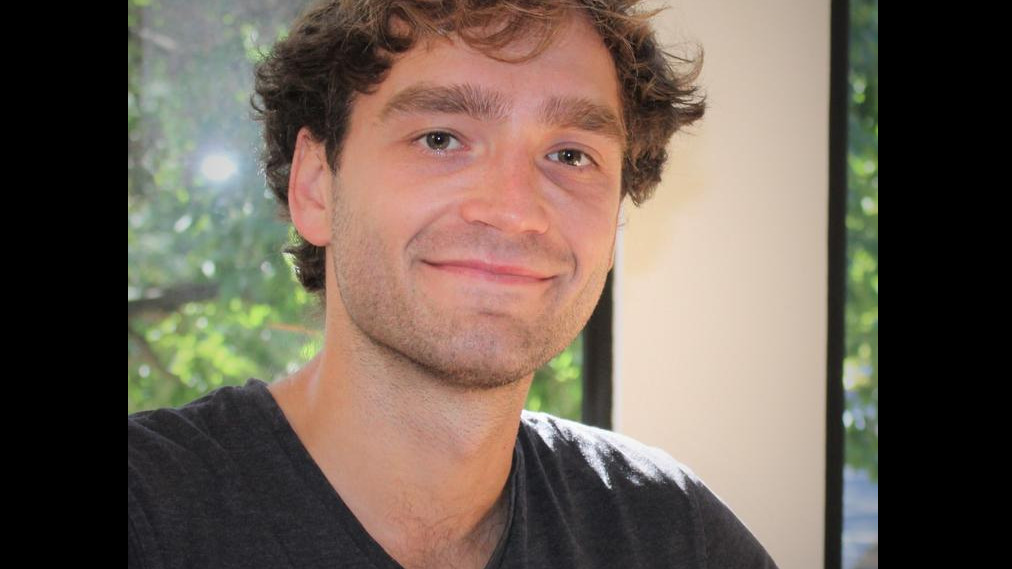Newsfrom our faculty members and students

Colloquium : Daniel Grošelj, Friday Fev 7, 14:00 - 15:00, Abreu Faro Auditorium
January 30 2025On Friday, February 7, from 14:00 to 15:00 in Abreu Faro Auditorium, Daniel Grošelj (Centre for mathematical Plasma Astrophysics (CmPA) KU Leuven, Belgium) will present a Colloquium as invitee of the scientific area of Plasmas Physics, Lasers and Nuclear Fusion.
Toward first-principles predictions of high-energy emission from black-hole coronaes
Black-hole coronae are among the most prominent sources of hard X-rays, high-energy cosmic rays and neutrinos. The radiation-dominated and optically moderately thick environments of black-hole coronae require a self-consistent treatment of plasma kinetics together with radiative transfer, which presents new challenges and opportunities for the study of dissipative processes in kinetic plasmas. Here, I will present results from recent radiative particle-in-cell simulations of plasma turbulence, which model the self-consistent interaction between high-energy photons and electrons. I will demonstrate that a sufficiently compact and magnetically powered source, with a size of about 10 gravitational radii or less, can operate as an efficient particle accelerator, while producing X-ray spectra consistent with observations. As an example, I demonstrate excellent agreement with X-ray spectra of NGC 4151. The method employed here opens a pathway for first-principles predictions of emission from a variety of high-energy sources, including gamma-ray bursts and magnetars, in addition to black-hole accretion flows.
All are invited to attend

Colloquium : Plamen Ivanov, Tuesday Fev 4, 14:00 - 15:00, Abreu Faro Auditorium
January 30 2025On Tuesday, February 4, from 14:00 to 15:00 in Abreu Faro Auditorium, Plamen Ivanov (Rudolf Peierls Centre for Theoretical Physics University of Oxford, UK) will present a Colloquium as invitee of the scientific area of Plasmas Physics, Lasers and Nuclear Fusion.
Plasma turbulence in magnetised-fusion devices
With hydrogen fuel that is ubiquitous on Earth (and beyond) and little to no dangerous waste, fusion’s promise to satiate humanity’s ever-growing energy demands may sound too good to be true. And it certainly would have been so were it not for the exotic conditions it requires: nuclear fusion becomes a viable source of energy only when the fuel (typically hydrogen) is heated up to well above one hundred million degrees Celsius. At these temperatures, the fuel turns into a plasma — and plasma can be manipulated by magnetic and electric fields. This is precisely the idea behind the magnetic-confinement approach to fusion: trap hydrogen plasma in a magnetic cage, then heat it enough for fusion to take place. However, heating it is the easy part; the hard one is making sure that the plasma is insulated enough from its environment so that the heat generated by the fusion processes is sufficient to maintain the plasma temperature. Sadly for the fusion programme, thermal conduction in such plasmas is dominated by turbulence — a chaotic and unpredictable mess of fluctuations. In this talk, we will discuss some of the basic features of turbulent fluctuations in magnetised-fusion plasmas, how we study them and what we have learnt over many decades of experimental and theoretical work. We will also highlight some recent results regarding electromagnetic fluctuations that challenge many traditional beliefs and clearly demonstrate that there is much we need to learn before fusion energy becomes a reality.
All are invited to attend

Colloquium : Mathieu Bailly-Grandvaux, Thursday Jan 30, 16:00 - 17:00 (zoom)
January 24 2025On Thursday, January 30, from 16:00 to 17:00 (by zoom), Mathieu Bailly-Grandvaux (Center for Energy Research, Univ. California San Diego, USA) will present a Colloquium as invitee of the scientific area of Plasmas Physics, Lasers and Nuclear Fusion.
Magnetized Implosions and Fast Particle Heating for ICF and Laboratory Astrophysics
My research focuses on the study of matter under extreme conditions of temperature, pressure, and magnetic fields, with key applications in inertial confinement fusion (ICF) and laboratory astrophysics. The recent achievement of nuclear fusion ignition at the National Ignition Facility (NIF) represents a historic milestone in the pursuit of inertial fusion energy (IFE). However, significant challenges remain, including enhancing the energy gain of fusion targets and developing engineering solutions to establish IFE as a viable power generation technology. Throughout my work in High-Energy-Density Physics (HEDP), I have cultivated a strong interest in the laser acceleration, transport, and energy deposition of fast electrons and protons, as well as in the pivotal role of external magnetic fields in enhancing energy coupling and confinement. My pioneering experiments as principal investigator (PI) on magnetized cylindrical implosions and fast-particle heating of warm dense matter (WDM) and magnetized hot dense plasmas have positioned me at the forefront of this research area.
This presentation will focus on magnetized implosions as a promising approach to improve confinement and guide fast particle beams to the core – both of which are appealing strategies for relaxing ignition constraints and enhancing energy gains in IFE. I will first present experimental results from the OMEGA laser facility, which identify the conditions for stable guiding of fast electrons to an imploded core, emphasizing the critical role of resistivity and interplay between compressed and self-generated magnetic fields. This work also revealed key challenges in measuring compressed magnetic fields and their impact on core conditions, which inspired a U.S. Department of Energy-funded project and experimental campaigns on OMEGA and NIF to address this gap using novel dopant spectroscopic techniques. On OMEGA, we obtained distinctive and highly reproducible emission dopant spectra in unmagnetized and magnetized implosions. Through validation of 2D extended-magnetohydrodynamic simulations with measurements, we demonstrate the role of ∼10 kT compressed magnetic field in suppressing radial heat conduction that led to a record 50% increase in core temperature. Additionally, I will present recent OMEGA-EP experiments that introduced high temporal and spectral resolution spectroscopy to precisely characterize ion-heated WDM samples. I will also highlight an ongoing integrated campaign on OMEGA aimed at assessing the robustness of proton fast ignition within the harsh environment of an implosion.
As a faculty candidate in the Department of Physics at IST Lisbon, I will outline my research agenda, teaching and mentoring strategies, and opportunities for collaboration with department members and my international network.
All are invited to attend

Colloquium : Philipp Kempski, Monday Jan 27, 14:00 - 15:00 (zoom)
January 24 2025On Monday, January 27, from 14:00 to 15:00 (by zoom), Philipp Kempski (Department of Astrophysical Sciences, Princeton University, USA) will present a Colloquium as invitee of the scientific area of Plasmas Physics, Lasers and Nuclear Fusion.
Wave Goodbye: A New Picture of Cosmic Ray Propagation
Cosmic rays (CRs), relativistic charged particles that permeate the universe, play a crucial role in shaping a broad range of astrophysical phenomena, from the ionization of star-forming molecular clouds to the launching of galactic winds. As a result, CRs are a key ingredient in models of galaxy evolution and structure formation. However, despite many decades of work, the propagation of CRs through galactic magnetic fields remains a major open problem, severely limiting our ability to accurately simulate their impact on galaxies. In this talk, I will discuss a new model of CR transport, where particle scattering is primarily due to rare coherent magnetic structures, such as small-scale bends, rather than volume-filling waves, as assumed in long-standing propagation theories. I will support this idea with extremely high-resolution simulations of CR transport in magnetized turbulence, and I will discuss how these coherent interstellar structures can be probed observationally.
All are invited to attend

Scouting colloquium : Rostom Mbarek, Thursday Jan 23, 14:00 - 15:00 (zoom)
January 16 2025On Thursday, January 23, from 14:00 to 15:00 (by zoom), Rostom Mbarek (Joint Space Science Institute, University of Maryland, USA) will present a colloquium as part of the scouting process for the scientific area of Plasmas Physics, Lasers and Nuclear Fusion.
Unveiling the Non-Thermal Universe: A Multi-Messenger Perspective on Active Galactic Nuclei
Recent advances in multi-messenger and time-domain astronomy have transformed our understanding of high-energy processes in active galactic nuclei (AGNs). By integrating observations from high-energy photon detectors, neutrino detectors, and cosmic-ray observatories, we can uncover the complex interplay between particle acceleration mechanisms and plasma dynamics in highly magnetized environments such as black hole jets, coronae, and accretion disks. My research combines innovative theoretical frameworks with cutting-edge simulations, including large-scale magnetohydrodynamic (MHD) models and first-principles Particle-in-Cell (PIC) simulations, to investigate these extreme environments across multiple scales. By aligning simulation results with observational data, my work establishes AGNs as some of the universe's most powerful particle accelerators, with significant implications for their host galaxies. These findings provide essential insights into the mechanisms driving jet and wind formation and reveal the profound role of supermassive black holes in shaping galactic evolution.
All are invited to attend
